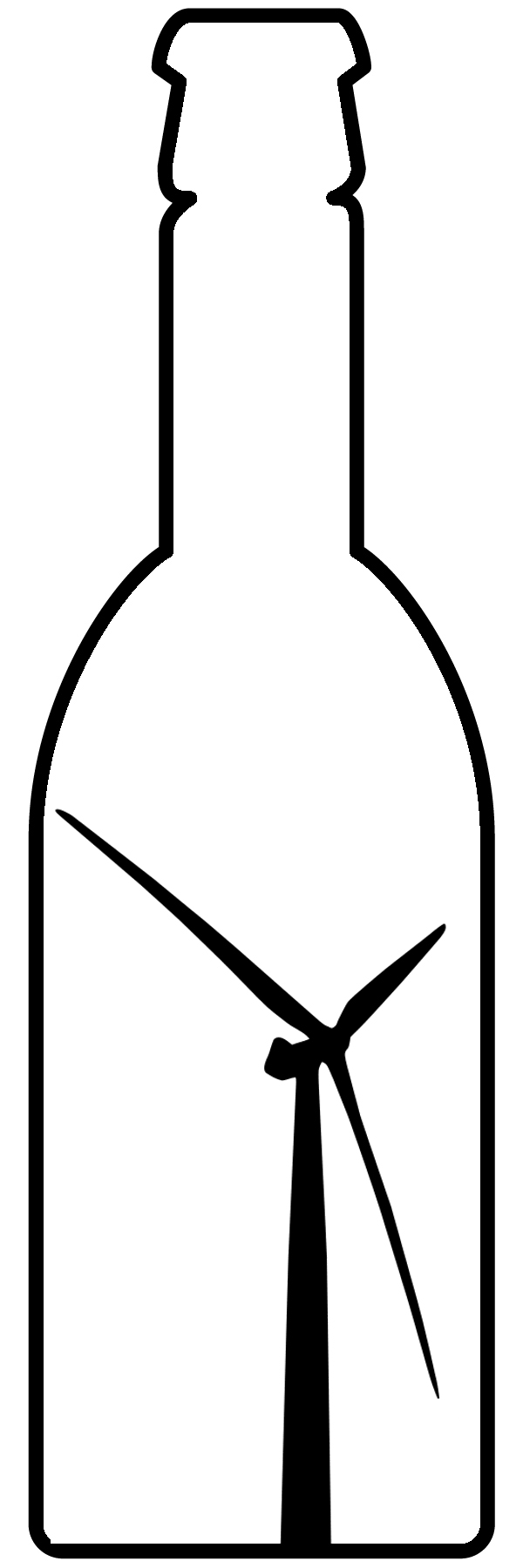Renewables out of the bottle
Posted by Big Gav in renewable energy
 Ugo Bardi a TOD Europe has a post on the emergence of renewable energy - Renewables out of the bottle.
Ugo Bardi a TOD Europe has a post on the emergence of renewable energy - Renewables out of the bottle.
There is an old zen koan that says that a baby goose was placed inside a glass bottle and raised inside it. When it was fully grown it could no longer pass through the neck of the bottle. How can we get the goose out of the bottle without breaking it? It is the concept of "satori," "revelation". It is something that shakes you out of your old views and takes you to a new vision. It happens when you see something apparently impossible suddenly coming true, like the goose in the bottle suddenly appearing outside, free. Renewables have been growing as inside a bottle so far; a bottle made of disbelief, red tape and not enough financing. It is time for a little satori in renewable energy. Renewables can hold on their own with new and more efficient technologies, in particular the CdTe thin film version which may have an EROEI of 40. With such EROEIs, we can start thinking of renewable energy as abundant and cheap. ...
This is an attitude that I have often seen in politicians and the public alike: renewables are nice toys, but little more. When it is time to get serious, you need something real. You can't produce energy without burning something. You need a smokestack, somewhere, that's why you need coal, or oil, or gas. That explains another story I was told: the story of the national minister of industry who was shown an electric heater (about 1 kW) powered by a 300 kW photovoltaic plant and who refused to believe what he was seeing. "Where is the trick?" he kept asking. No smokestack, no energy, apparently. You can't power the world with little blue squares facing the sun or with propellers that turn in the wind, sometimes.
Even promoters of renewables seem to see renewable energy at best as a marginal source. Most environmentalits seem to think that the right way to go is energy saving. That's the real, untapped energy source that we need to exploit. This is a respectable opinion, but I think it doesn't take into account the real potential of renewables. And that potential is truly gigantic: think of the amount of sunlight that arrives on earth everyday - you probably have heard that it is almost 10,000 times larger than the primary energy we produce today (see here ). So, what prevents us from using it? Once you start thinking about the possibilities, you may experience a little satori , an illumination where you see renewable energy suddenly breaking free out of the bottle. Reneables can provide as much energy as we need and it doesn't have to be expensive. After all, sunlight and wind are free and there is plenty of both.
But even a Zen satori has to be based on some good physics when it is about energy. And, when talking renewables, the good physics is mostly contained in the concept of EROEI - energy returned for energy invested. It is the ratio of the energy that a plant can produce over its lifetime divided by the energy needed to build it, maintain it, and dismantle it when its useful life is over. A good energy source must have an EROEI larger than one; obviously. But that is not enough; it must have an energy much larger than one if it has to provide that surplus that we need to keep up what we call "civilization".
Now, if you look at Charles Hall's balloon graph" with a list of EROEIs for various sources, you'll probably think that there is not much hope for renewables. In the graph, the EROEI of PV is given as under 10 and that of wind as under 20. The graph is dominated by the blue balloon of "Oil, domestic, 1930") which is rated as having EROEI= 100. If our economy has been built on oil and if oil's EROEI is so large (or, at least it was at that time) then we can't expect that renewables could substitute oil and fossil fuels. Renewables, it seems, are a marginal source at best and surely can't give us back the good times of old.
But things move on. Charlie Hall's graph is already outdated in some points. The EROEI of renewables is increasing, it is actually shooting up. Realizing how fast that is happening was a little satori for me, not more than a few months ago. It came when I found a 2007 paper by Raugei, Bargigli and Ulgiati that evaluated the LCA of various photovoltaic technologies (See the references at the end). Then, the same authors published another paper in 2009 and in a few years the change has been remarkable. They don't report the EROEIs directly, but these can be approximately calculated from the values of the EPBT (energy payback time). I discussed the results with one of the authors, Marco Raugei (incidentally, a former student of mine) and we arrived to the conclusion that, in favorable conditions of illumination (1700 kWh/(m2*year) and assuming a lifetime of 30 years, polycrystalline silicon has an EROEI of 15, while
CdTe thin film cells have an EROEI of 40.
Now, tell me if this is not enough for a good satori .





